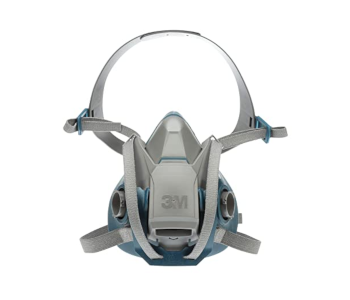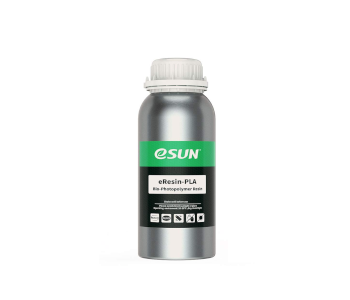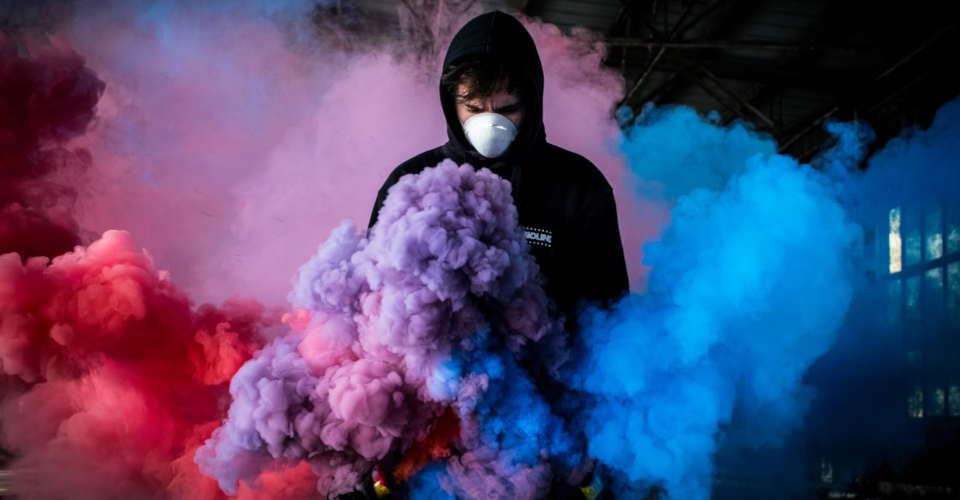How Dangerous is 3D Printing Resin?
Resin-based 3D printing has very distinct advantages in terms of quality and detail accuracy. However, it is not something that is generally recommended for beginners because of the difficulty of handling photopolymer resin.
3D printing resin is unsafe for skin contact and can cause dermatitis or other adverse effects. Prolonged inhalation of fumes from resin can also cause drowsiness or headaches. Due to its toxic nature, 3D printing resin needs to be cured prior to disposal.
In this article, we will be taking a closer look at the hazards of 3D printing resin and how you can protect yourself while handling it.
Skin contact – hazards and protection

Being a liquid, it’s very easy to get some resin on your hands, arms, or even your feet and legs. This may not be harmful if it happens once or twice. However, consequences can become more serious after chronic skin exposure to resin.
3D printing resin is considered a “sensitizer.” This means that people who get more frequently exposed to it are more likely to develop an adverse reaction to it. This more commonly manifests in the form of skin allergy or dermatitis. Resin also readily absorbs into the skin when it is in contact for extended periods, making an allergic reaction more likely.
There have also been accounts of people experiencing pain when uncured resin on their skin is exposed to sunlight. This makes sense as UV radiation makes resin more reactive. This chemical reaction can be harmful to your skin and is likely responsible for the pain.
Fortunately, protecting yourself is just a matter of putting a barrier between the 3D printing resin and your skin. This can be done by wearing gloves, a long-sleeved shirt, pants, and shoes whenever you do 3D printing with resin. Make sure to wear nitrile gloves, as resin tends to react quickly with latex gloves. You will still need to dispose of those nitrile gloves after every use.
It’s also important to wear eye protection. A standard pair of safety goggles will do just fine.
Should you get any resin on your skin, wash the area immediately with soap and cold water. Hot water will just encourage the absorption of the resin or make it more reactive. You might need to do this for a few minutes, as removing resin with water can take quite a while.
Inhalation – hazards and protection
Another potential hazard is the inhalation of fumes from the resin. Some 3D printing resin emits very unpleasant fumes, so wearing respiratory protection might come naturally. However, there are also some resins that do not have any unpleasant smell. Should this be the case, just keep in mind that respiratory protection is still necessary.
The long-term effects of inhalation of fumes from photopolymer resins have not yet been well-studied. However, some people have experienced dizziness or headaches after just a few minutes of inhalation of these fumes. It’s tough to say exactly how it will affect you, so it’s better to just play it safe.

There are several ways that you can protect yourself from this hazard. For limited exposure, the standard disposable face masks will work well enough to limit the fumes that you will inhale. These aren’t exactly made for chemical fumes, though. If you’re planning to stay in the same room for close to an hour, it would be a better idea to wear a half-mask respirator with an appropriate filter for organic vapors.
Even with respiratory protection, allowing the fumes to accumulate in your workshop will still be a bad idea. To keep the concentration of these gases low, make sure that your workshop has good ventilation. Just keep your door or a few windows open to allow fresh air to come in.
How to dispose of 3D printing resin properly
Another matter of resin safety is disposal. Since we have established by now that resin is toxic, it also follows that it can be harmful as well to animals and the environment. For this reason, you should not dispose of resin without treating it first. This also applies to all other objects that have come in contact with the resin including paper towels, disposable gloves, empty resin bottles, and washing solutions.
The most practical solution is to simply leave any items with uncured resin out in the sun for a few hours. The UV radiation should cure the resin and turn it into solid flakes of plastic. For washing solutions, these solid particles can be filtered out before disposal. When fully cured, the plastic can be disposed of along with standard household waste.
Other tips for resin safety
1. With our knowledge that resins are toxic, it is also important to prevent unsupervised access to them. This is very important if you have kids or pets in your household. They could end up with resin getting spilled on them. The worst-case scenario is that they could ingest some of the resin.
There is limited information on the effects of ingesting photopolymer resin. We imagine that this is something we will consider a medical emergency, should it happen.
This emphasizes the importance of keeping your 3D printer and resin bottles in an isolated part of your house. Make sure access to the room is restricted, especially if you aren’t around to keep an eye on it.

2. There are 3D printing resins that are formulated to be less toxic. A couple of good examples are the ANYCUBIC Plant-Based Resin and the eSun 3D Printer bio Resin. According to the descriptions of these products, they are made from plant-based materials and do not contain harmful chemicals like BPA or benzene. They produce fewer odors, are not irritating, and can be used with standard LCD-based 3D printers.
Despite the promises, we still advise practicing the standard safety procedures when handling these plant-based resins. It’s a good option if you can’t deal with the unpleasant smell of standard resins. However, just because you can’t smell anything does not mean that it’s completely safe to inhale the fumes for hours at a time.
Final thoughts
If you’re planning to get into resin-based 3D printing, the special safety hazards of handling resin is one of the first few things that you should know. It may be one of the more intimidating aspects of 3D printing with resin – it’s certainly one of our least favorite.
Photopolymer resins are considered toxic compounds that are not safe for skin contact and ingestion. They also emit fumes that have an unpleasant smell and can result in nausea or headaches. With these in mind, skin, eye, and respiratory protection are non-negotiable whenever you are working with 3D printing resins.


